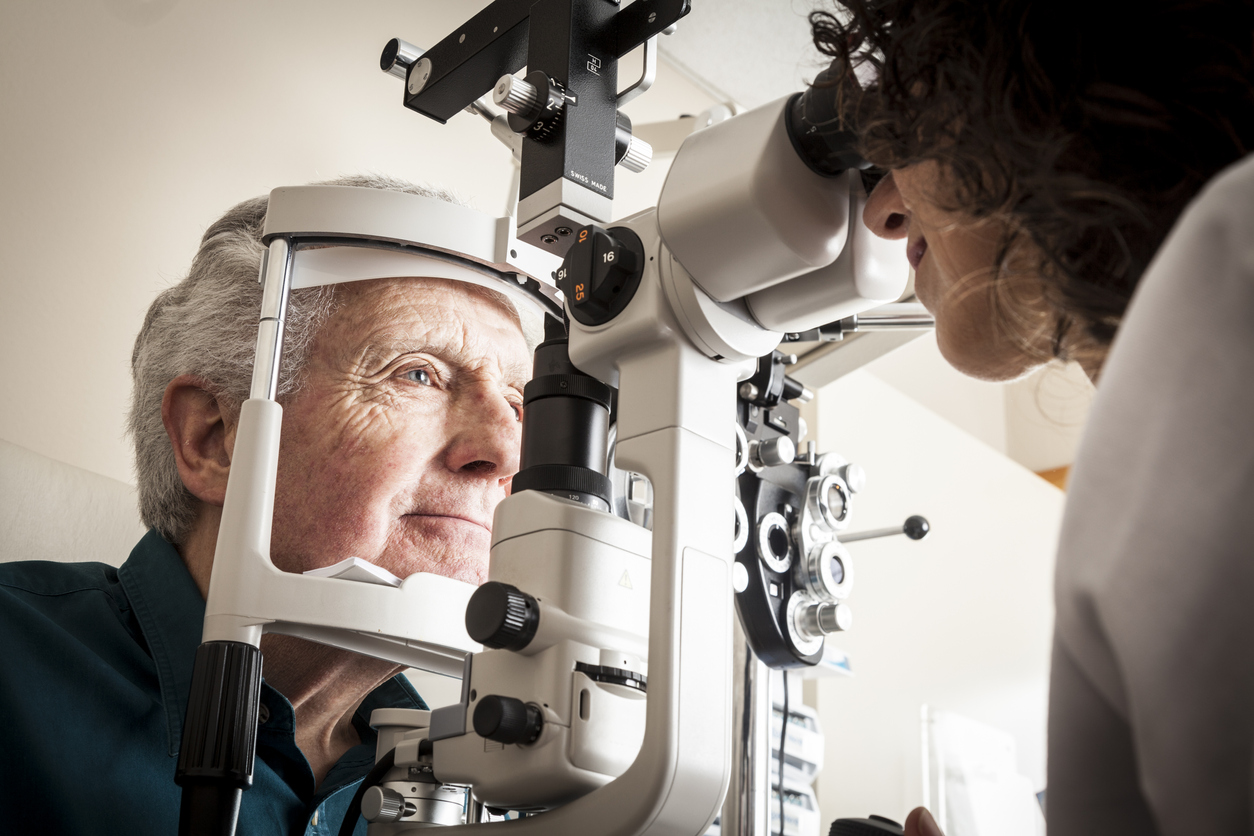Age-Related Macular Degeneration: How to Preserve Your Vision

Age-related macular degeneration (AMD) is a progressive eye disease, meaning that the condition’s symptoms will, unfortunately, worsen over time. During AMD, the macula (the small, centrally located portion of the retina) degenerates or breaks down. As this can occur as a person ages, it’s known as age-related macular degeneration. AMD does not typically result in blindness, but it can lead to severe vision loss.
Retina Consultants San Diego is experienced in working with patients experiencing AMD and can provide the necessary treatment needed to best preserve vision as well as our patient’s quality of life. We invite you to learn more about AMD, including symptoms and treatment options that help preserve vision below.
Age-Related Macular Degeneration Symptoms
Due to the nature of AMD as a progressive eye disease, most people will not realize they have the condition until its symptoms become noticeable or begin occurring in both eyes. Symptoms of AMD can include:
- Blurry vision
- Dark or blurred areas of vision
- Worsening perception of color(s)
If you begin to notice any of the above symptoms, it is strongly recommended that you schedule an appointment with your RCSD doctor.
Types of Age-Related Macular Degeneration
There are two types of AMD: dry form and wet form. In dry form AMD, patients can expect the following:
-
Drusen, which are small, yellow-colored deposits are found in the macula. When small in number, drusen do not typically impact a person’s vision, but as they multiply and grow in size, vision can be negatively impacted. Many patients first realize that their vision has been affected when they are unable to read font sizes that they once were able to read without issue. Blind spots can occur if dry AMD worsens and/or left untreated.
-
In wet AMD, blood vessels begin to grow under the macula and over time, leak fluid into the retina. This leaking fluid can distort vision, giving the appearance of wavy lines when looking straight ahead at an object. Similar to dry AMD, wet AMD can worsen over time without treatment, leading to scarring that can also cause blind spots.
Treatment for Age-Related Macular Degeneration
While there is currently no cure available for AMD, there are effective treatments provided by RCSD that can slow down the progression of AMD’s symptoms in order to maintain the best possible vision quality. Options for patients can include the following treatments:
-
Oral medication(s): Anti-angiogenesis medications will disrupt the leakage of blood vessels during wet AMD. For many patients, the use of these medications can actually return some or all of the vision loss they’ve experienced.
-
Anti-VEGF injections: Anti-VEGF injections such as Avastin, Lucentis, and Eylea help to disrupt the growth of abnormal blood vessels.
-
Laser therapies: There are laser therapies available that work to disrupt the macula changes that occur during AMD and/or inject medication that serves the same purpose. Differing laser therapies are used depending on the severity of vision loss that has taken place thus far.
-
Low vision aid products: There are a number of products available to assist those with impaired vision due to AMD. These products can be used for those who do not wish to or cannot use medication or laser therapies, and help AMD patients to optimize their remaining vision. Examples of this are hand-held magnifiers or magnifying reading glasses.
As noted above, it’s essential that anyone experiencing AMD symptoms or similar seek the care of their retina specialist as soon as possible. AMD symptoms can be reverted in a number of cases, and progression of vision impairment can be slowed. If you have any questions about age-related macular degeneration, please contact RCSD today.

